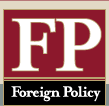
Foreign Policy
Spring 1998
Le Livre noir du communisme: Crimes, terreur,
repression
(The Black Book of Communism: Crimes, Terror, and
Repression)
by Stéphane Courtois, et al., Paris: Robert Laffont, 1997 (in
French).
Reviewed by: Stanley Hoffmann.
This gigantic volume, the sum of the efforts of 11 historians, social scientists, and journalists, is less important for its content than for the intellectual storm it has provoked in France. It is both a compilation of the crimes of communism in Afghanistan, Africa, Cambodia, China, Eastern Europe, Korea, Latin America, and the Soviet Union, and an episode in the seemingly endless battle between former French leftists who have repudiated their earlier marxist inclinations and those French intellectuals who have remained faithful to the old creed or sympathetic to some of its aspects. The compilation focuses explicitly on the uses and effects of terror in communist regimes, specifically with regard to what the chief editor, historian Stéphane Courtois, terms “crimes against persons.” Contributor Nicolas Werth, the son of the late British journalist Alexander Werth, in his almost 300 pages on the Soviet Union (“a state against its people”), acknowledges that this topic treads on well-traveled ground. However, this does not rule out further insights; both Werth’s analyses of the “cycles of violence” and his well-documented assertion that most of the practices of terror had already been put in place under Lenin are impressive. Historian Jean-Louis Margolin, in his contribution on China and Indochina, provides a remarkable chapter on Cambodia, a country of “disconcerting crime.” There does not seem to be any valid reason for objecting to a book that deals with the victims of a totalitarian system, as long as one acknowledges that this does not exhaust the possibilities for analyzing communist ideology and regimes from other angles. Why, then, did the Livre noir result in such a storm of copious, polemical articles in the French press and in the rather unusual spectacle of some of the authors—Werth, for example—attacking Courtois, who wrote the book’s introduction and conclusion?What Werth and some of his colleagues object to is “the manipulation of the figures of the numbers of people killed” (Courtois talks of almost 100 million, including 65 million in China); “the use of shock formulas, the juxtaposition of histories aimed at asserting the comparability and, next, the identities of fascism, and Nazism, and communism.” Indeed, Courtois would have been far more effective if he had shown more restraint. There is, after all, nothing new or scandalous about attempting to show that different forms of totalitarianism had comparable features, relied on ideological bombardment through propaganda, and resorted to mass terror. He would have done more for the reputation of the book if he had, for instance, given a less simplistic interpretation of Yalta and if, in his attempt to explain why the crimes of communism have been explored less than those of Nazism, he had not imprudently written that “after 1945, the genocide of the Jews appeared as the paradigm of modern barbarism, so much so that it occupied all the space reserved to the perception of mass terror in the twentieth century.” The polemics that followed publication showed that many left-wing French intellectuals remain reluctant to equate communism and Nazism, both because they do not believe that what Courtois calls “class genocide” is the same as racial genocide, and because they find no redeeming feature in Nazi nihilism and exterminationism (to employ the useful term coined by Daniel Goldhagen, author of Hitler’s Willing Executioners). Communism, even if it ultimately betrayed its ideals, at least embraced a universalistic ideal of human liberation. Even French historian François Furet, who died last fall before he could write the preface to the Livre noir, had, in a series of letters exchanged with the German historian Ernst Nolte, offered an analysis of the similarities between communism and Nazism that was much more nuanced than either Courtois’ explanation or Nolte’s “genetico-historical” account of them. And the fierce anti- (and ex-) communist Alain Besançon, a psychoanalyst turned historian, provides a more subtle interpretation of why the crimes of communism have been less stigmatized by “historical memory” than those of Nazism. This debate also shows that the parochialism of the French intelligentsia lives on. Furet’s last book, Le Passé d’une illusion, a long examination of fellow-traveling which aimed at covering the world, focused disproportionately on France. Only in France can authors argue about the reasons for the lax investigation of communist crimes—a topic that scholars in Great Britain and the United States have more or less exhausted. The disintoxication from communism that began for intellectuals such as Courtois’ late mentor Annie Kriegel (a high communist official who became France’s leading expert on the history of French communism) in the mid-1950s and from marxism in the mid-1970s (the “Solzhenitsyn effect”) has left some of them searching for other ideologies (liberalism for Furet, Zionism for Kriegel). But other intellectuals demonstrate the validity behind Furet’s dispirited comment that the more capitalism triumphs, the more it is hated. And while these men and women have no sympathy for a social democracy converted to the market and no faith left in a vanished communism, they find it hard to give up old dreams of human emancipation and liberation from poverty and alienation. This is the backdrop of the controversy that Courtois has fostered. In France, even the most obvious enterprise—the history of the victims of cruelty and fear that the late Harvard political theorist Judith Shklar was so much concerned with throughout her life—runs into tempests that, despite Furet’s famous proclamation that “the French Revolution is over,” have raged since the eighteenth century and are raging still.